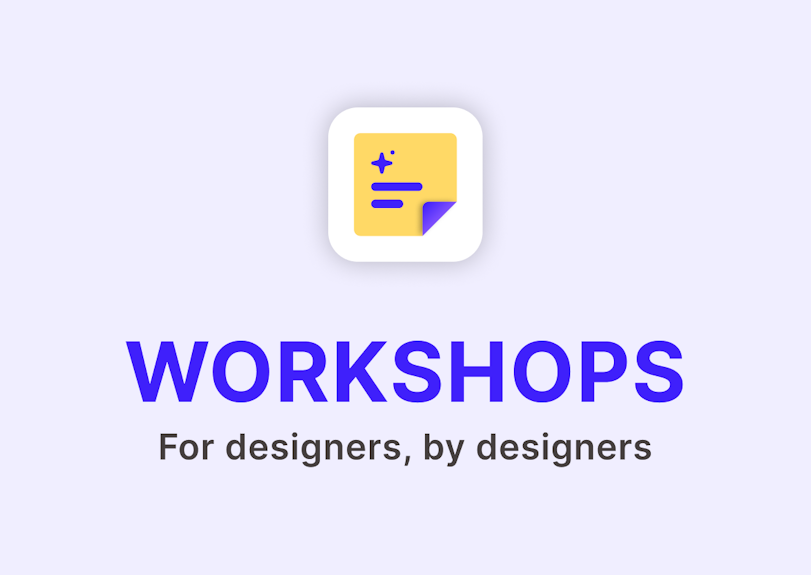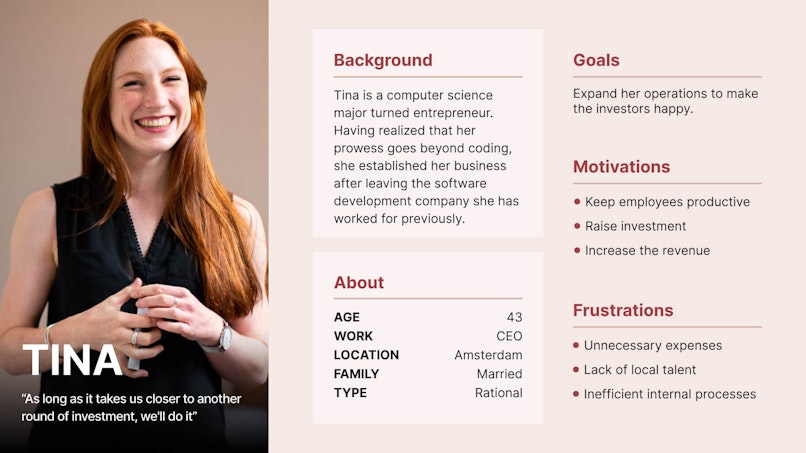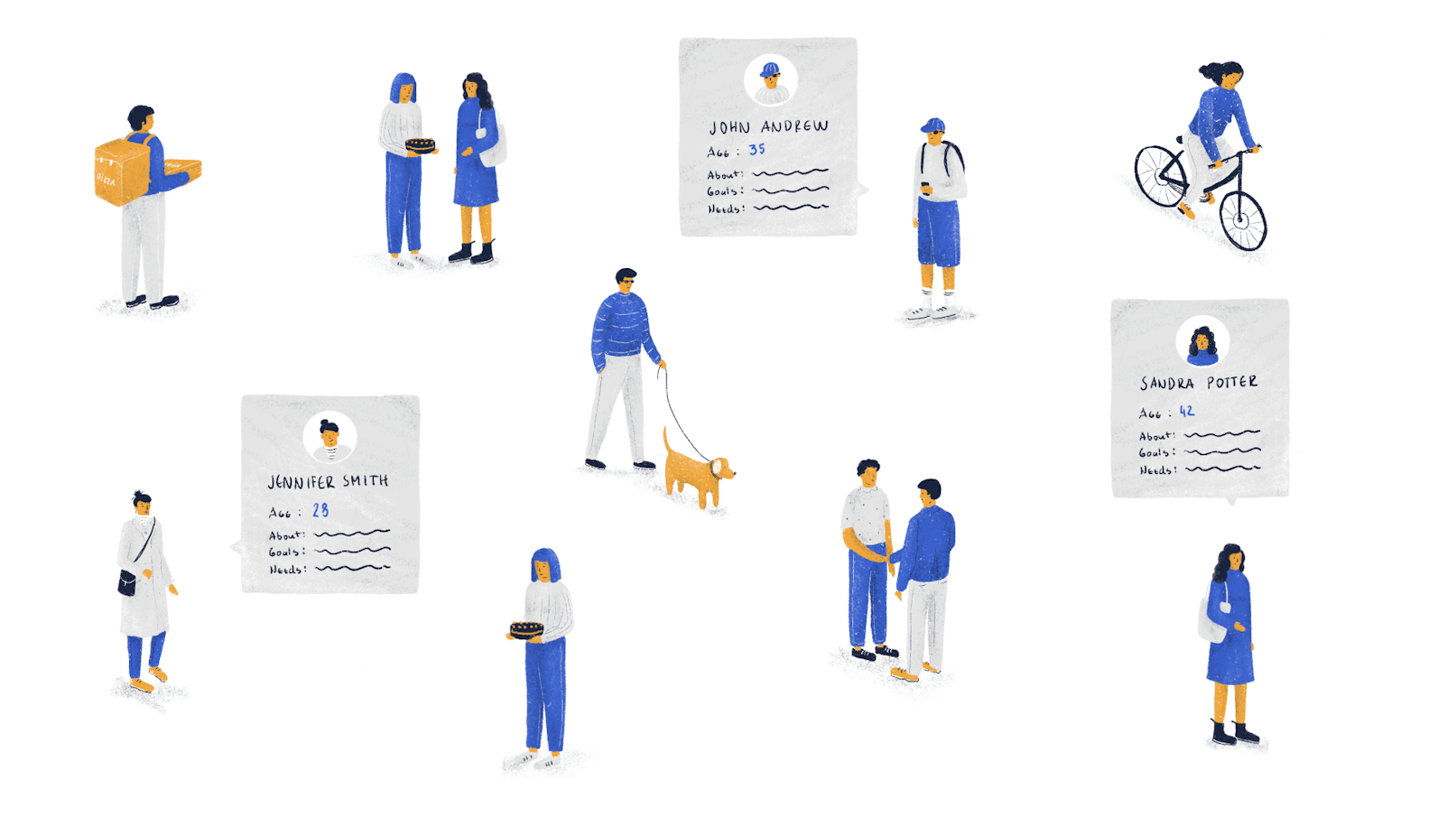Anyone who has ever worked with a digital product knows. You need a persona. A persona file helps coordinate activities and align around the things that matter. However, creating an actionable persona that's remotely useful is easier said than done. More often than not, this crucial deliverable ends up gathering dust on your Google Drive.
The number one reason it happens is that personas tend to be created as a one-off collection of assumptions and feeble Google searches. That won't do. We can do better.
Persona workshops are an essential first step in creating a truly useful artifact that becomes invaluable for the whole company. In this article, we will tell you how.

One Plugin for All Workshop Needs
26 templates; Get stakeholder buy-in; Become a better UX'er.
Get AI PluginWhat are Persona Workshops?
A persona workshop is essentially a collaborative session where stakeholders gather to create user personas for a product or service. The goal of the meeting is to develop a shared understanding of the target user and to provide a clear picture of their goals, motivations, behaviors, and pain points. Persona workshops are typically conducted early in the design process, and they are used to guide decision-making throughout the product development cycle.
Persona workshops are different from usability testing or user research. Usability testing and research are methods used to gather data from real users, while persona workshops are used to create fictional representations of those users. Persona workshops are based on research and data, but they are not a substitute for user testing or research. Instead, they are used to supplement and inform those methods.
By gathering essential stakeholders, you create a platform for them to transfer and democratize their knowledge, so that people in other departments may act on it and develop it further.
How to Conduct a Persona Workshop:
Conducting a persona workshop involves multiple steps. Here is a rough step-by-step guide:
Step 1: Identify Participants
Persona workshops are only as effective as the group of stakeholders is diverse. Typically, you would invite designers, developers, product managers, and marketers. The participants should represent various perspectives and have a shared interest in the success of the product or service.
When inviting participants, you have to make sure they understand what is required of them and why the meeting is important. You don't want everyone to just sit through the meeting with their camera off while multitasking. You need participants to be invested and engaged.
Step 2: Gather Research
Before the workshop, gather all available research on the target users. This could include user surveys, user interviews, market research, and analytics data. The research should be analyzed and synthesized to identify patterns and themes.
Essentially, you need a good idea of what's been done already. That way, you won't have to do the same work twice. Additionally, you can build on top of the insight that had already been uncovered.
Step 3: Define User Segments
Based on the research, identify the different user segments that will be represented by the personas. User segments are categories of users who have enough in common to justify grouping them.
This step is especially important for complex products that cater to numerous user types. Additionally, if you have a "consumer product" that "everyone" will use, you need to reconsider and break down "everyone" into manageable chunks. Remember, a friend to all is a friend to none.
Step 4: Create Persona Templates
Create a persona template with key information such as the persona's name, age, occupation, goals, motivations, behaviors, and pain points. The template should be flexible enough to accommodate the needs of each user segment.
The template is helpful in helping steer the stakeholders' thoughts toward producing helpful insights. On top of having a pre-built template (it doesn't need to be designed like the example below), you will also be adding new insights.

This is a typical succinct representation of a persona. You don't have to format things that way, especially if you have more information that can comfortably fit on a page like that.
Step 5: Conduct the Workshop
Now that you're done with the preparation, you can conduct the actual workshop. The amount of time it will take mostly depends on the number of stakeholders you've invited and the user groups you've outlined. If you can't fit everything you want to go over in a single meeting, have multiple.
Personally, to conduct a workshop (persona or otherwise) we use FigJam. There are also alternatives like Miro or Whimsical. Whatever tool you choose, it has to let to edit text and media collaboratively.
The rest is mostly a fairly typical workshop structure. You start with an icebreaker (especially if the participants don't interact much normally). You state the purpose, goals, structure, and timing of the meeting. Then, you just go through the agenda in a timely manner.
Step 6: Review and Refine
Typically, after you're done with the workshop, the file will end up looking very chaotic. That's normal. However, it's your job as the facilitator to sort things. You should look for common themes and patterns across the personas. Refine the personas to ensure they accurately represent the target users.
Practical Tips & Considerations
Here are some practical tips to make your persona workshops effective:
Persona development is not a one-off activity. You will be iterating on it, and adding new insights as you uncover them.
Personas shouldn't be sacred documents that can only be accessed and edited by one person. Those have to be accessible team-wide.
What you should also do is record the meeting from start to finish. Your memory isn't foolproof (especially under the strain of having to conduct a workshop). Additionally, those participants who couldn't participate can watch the recording and offer valuable comments.
You should nudge the participants to have their cameras on. If not, it's likely they will multitask and not pay due attention. This tip applies to all workshops.
If there's a tendency for a few people to do the talking for everyone, you should have the participants do their tasks individually, and then discuss. You can also proactively ask participants for their opinions.
Conclusion
The best we could hope with this article is that your personas will not end up rusty, lonely, and unused. If they are, there's no shame in starting over with a persona workshop to revitalize your efforts.





